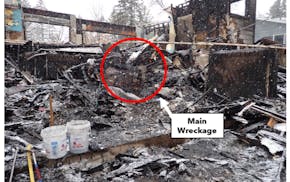Q: I lead a cross-functional international team, and we are able to meet in person only two to three times per year. Each time we come back fired up, but then energy fades pretty quickly.
It's happening again after our most recent event. What can I do right now to rebuild momentum, and how can I prevent this in the future?
Shelly, 50, project lead
A: Find ways to benefit from the good parts of having a widely dispersed team, while addressing the challenges.
Great things happen when a team comes together. You can share ideas, sit around a table to solve problems, and enjoy meals and social time together.
You also learn more about the nuances of your colleagues' behavior: their body language and nonverbal signals, which can help you interact more effectively when you're apart.
You also get to focus on your purpose for meeting in a way that you can't when you are all back home and immersed in your normal day-to-day.
This is where reality often comes crashing in, leading to the situation you've raised.
For right now, be transparent about what you are seeing.
Send a team note or have a call where you talk about your enthusiasm at your meeting and how hard it can be to maintain those connections. Ask your team for ideas to help carry forward the energy so that they can contribute to the solution.
There are a few easy steps that come to mind.
Build a culture of explicit appreciation. When someone does something useful, kind or innovative, call it out!
This isn't a top-down activity; it's something everyone can do to build positive buzz about being part of such a great group.
Connect people on tasks in different ways. It's easy to get into a rut of working with the same people all the time. You can deepen the team's relationships by assigning projects to people who may not have worked closely together before.
Use visuals. If you don't have pictures on your online work profiles, add them.
If you took pictures at your past events, send them out. This is especially fun as a surprise e-mail about a shared memory.
Build on these for future events, adding another layer of intentionality.
Recognize the team boost you get from being together, and talk about ways you can get that glow to last longer. Are there steps you can take? Virtual coffees or happy hours? Regional meetings for parts of the group?
Include an agenda item about collaborating across time zones and distance.
Make sure you understand the frustrations, and also think about what you gain from the variety of perspectives you all bring.
Keep in mind that being co-located also doesn't mean living happily ever after.
You can still get friction, which can be exacerbated by proximity.
However, it's easier to sweep disagreements under the rug if you don't see each other.
If there's too much of this, it can have a corrosive effect on team cohesion.
As the leader, you have a primary responsibility, but not the sole responsibility.
If you build agreement that your team has value and is worth nurturing, you can then rely on all members to step up to help support it.
What challenges do you face at work? Send your questions to Liz Reyer, leadership coach and president of Reyer Coaching & Consulting in Eagan. She can be reached at liz@deliverchange.com.

Ramstad: Readers see early signs of tariffs and miss printed stock tables
Trump tariffs created a volatile market, which comes with big opportunities

Trump tariffs whipped up a deluge of financial advice. Here's how to interpret it.

For some Minnesotans, air disasters trigger increased fear of flying and less travel

